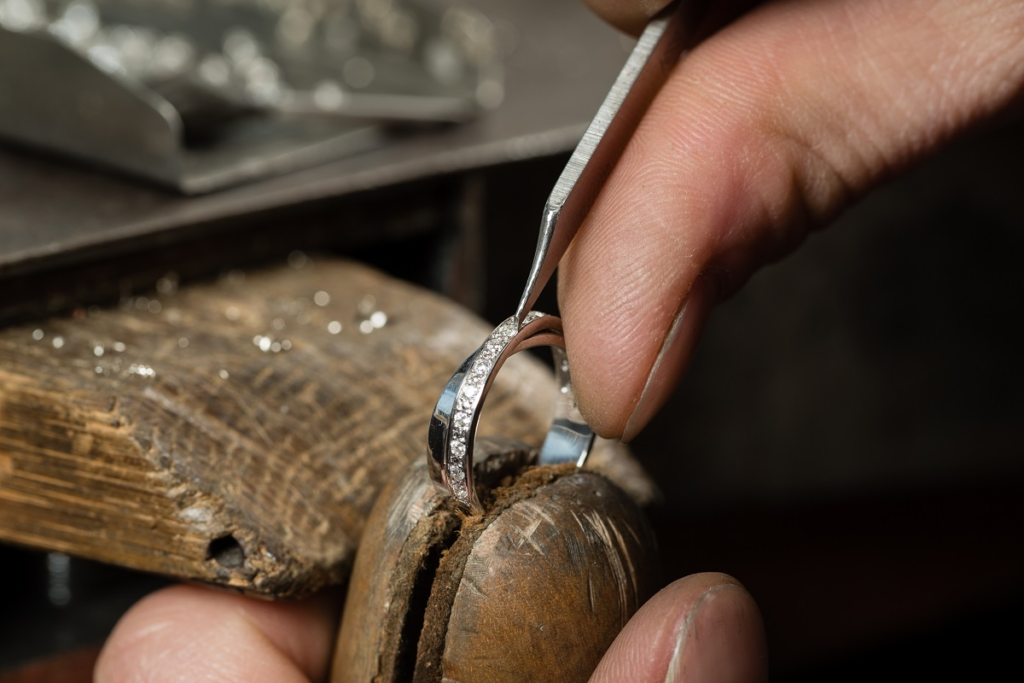What can you wear when a fashion necklace lacks the classy appearance you’re looking for, but an 18-karat gold family heirloom seems overkill?
In past years, you may not have a lot of options. But today, a few brands are offering “in-between” jewelry pieces that are elegant looking without being pricey: demi-fine jewelry.
What is Demi-Fine Jewelry?
Demi-fine is an emerging jewelry category that found its sweet spot in the hearts and pockets of luxury-seeking millennials. It’s synonymous to affordable, everyday luxury, which you can wear daily or once a year, depending on the design you fancy. Usually fashioned from gold-plated sterling silver (or other premium metals), demi-fine jewelry designs are contemporary yet exquisitely crafted.
The appeal of demi-fine jewelry goes beyond providing a practical solution to a fashion need. It meets the needs of consumers in their 20s and 30s who are hunting for products that provide value for money, accessible luxury, and individuality.
Affordable Luxury

Demi-fine jewelry, like a stud earring made of 925 Italy silver worth $100 or a multi-gem necklace made of 14-karat gold worth $4,000, isn’t cheap. But compared to fine jewelry, the luxury of demi-fine jewelry is accessible to the average consumer.
Can you find a $1,500 extravagant-looking piece in a fine jewelry shop? With this amount, you can already afford a high-end piece from the demi-fine ring collection. As an example, the price for a plain but elegant-looking stud pendant may start at $45. Though affordable, each piece carries intrinsic value because of its high-quality metal material.
Moreover, the diversity of demi-fine jewelry designs allows for a range of options and price points, depending on the material, design intricacy, and embellishments used in the piece.
Designers have their own preference and philosophy for choosing certain materials, such as metal, precious or semi-precious stones, and natural vs lab-grown gems. WWAKE, for instance, loves working with lower-karat gold and gold-plated silver while Heyjow is fixated on gold-dipped brass for durability and timeless appeal.
A Satisfying Self-reward
Self-giving is a trend with a growing following, especially among millennials. Self-givers believe in rewarding their hard work or celebrating important achievements by gifting themselves with something extra special, something they’ve saved up for throughout the year, such as a coveted gadget, an extended vacation, or a luxurious piece of jewelry.
Because of their affordability and intrinsic value, demi-fine jewelry is an excellent reward choice. They’re timeless and practical, especially for the career-driven professional who power dresses for client meetings and evening affairs.
Expression of Individuality
The appetite for individuality is stronger today than many years back. It is driving the trend for personalization in the fashion and jewelry industries.
Along with a number of other demi-fine jewelry brands, UK jewelry designer Monica Vinader is capitalizing on this trend. You can stack and style their friendship bracelets by combining designs or colors. Engraving rings or bracelets also lets you personalize your pieces further. And you can do this without a specialist engraver; by using their special in-store apps.
Jewelers today recognize the gap between the fashion and fine jewelry markets — a gap that demi-fine jewelry has started to fill. New jewelry retail brands, as well as fine jewelry makers, have come up with their own semi-luxury collections. Thanks to this new category in luxury jewelry, you can now reward yourself with or give another a stunning, personalized piece without investing your entire savings.









